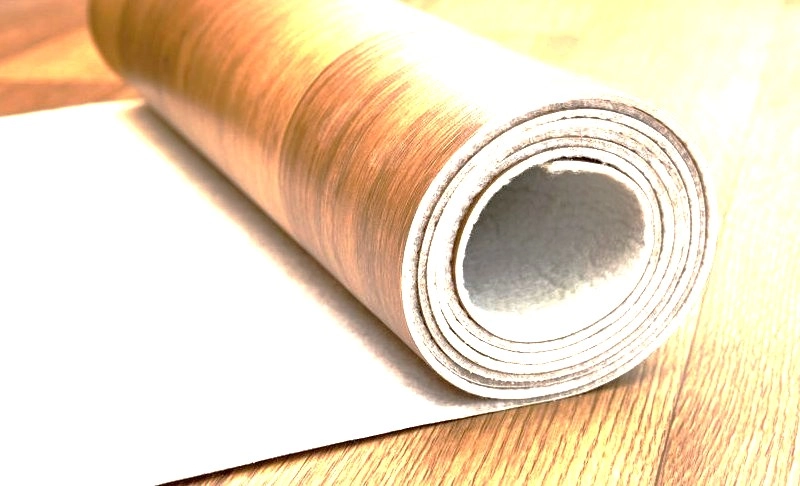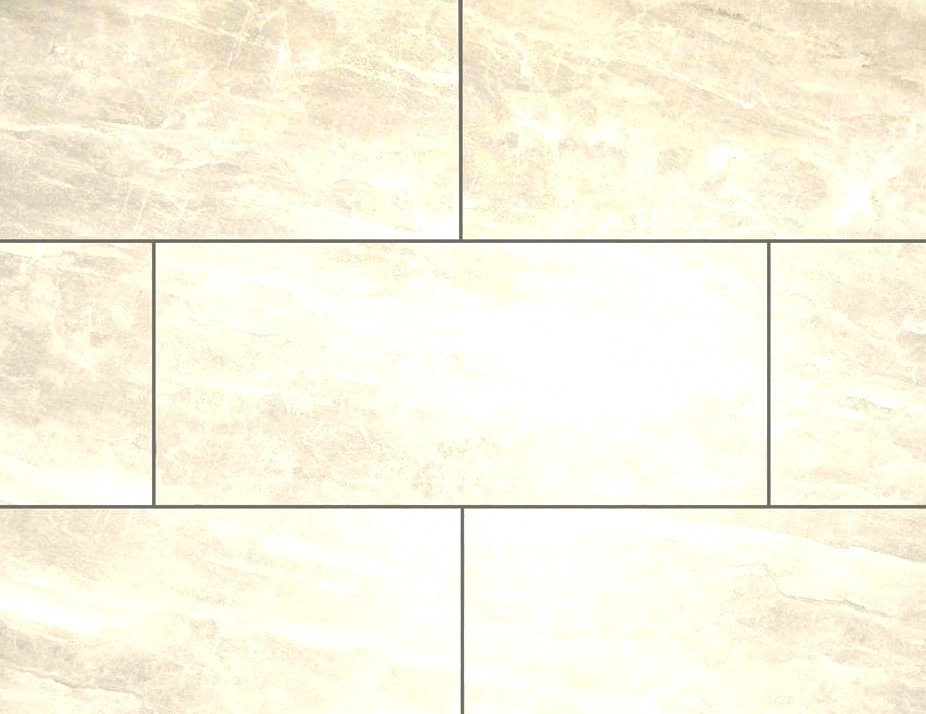Can You Install DITRA Over Linoleum?

It seems sense that you would want to install DITRA over linoleum. During the tile installation process, DITRA is one of the best uncoupling membranes.
Given how particular tiles are regarding the substrates they should be placed on, you might reconsider your decision to lay tile over linoleum.
Professional advice on whether DITRA can be applied to a linoleum flooring substrate will be given in this article. I’ll also go over some of the dangers and how to stay away from them.
Does Schluter Suggest Using DITRA Instead of Linoleum?
Asking the manufacturer directly is always a good idea before starting any job. DITRA’s manufacturer, Schluter, suggests installing it on vinyl flooring, which is comparable to linoleum.
They do, however, caution against applying DITRA on cushioned or multi-layered linoleum or vinyl flooring.
These two factors need to be verified if you plan to install DITRA on linoleum. Does the linoleum have more than one layer? because it is difficult to remove linoleum.
Some homeowners frequently cover their old linoleum floors with new. Second, to provide the illusion of carpet, some linoleum floors may be padded.
What Advantages Does Using DITRA Instead of Linoleum Offer?
Linoleum must be removed in order to tile over it using the suggested technique. DITRA provides homeowners with a shortcut that eliminates the need to remove linoleum from the flooring substrate.
Because of DITRA’s uncoupling properties, the tiles won’t be impacted by linoleum motions. Additionally, DITRA encourages tile adherence to the floor, which is impossible when laying tiles directly on linoleum.
It’s more difficult to remove linoleum flooring than to lay it. Many homeowners choose to tile directly over it because of this.
The DITRA uncoupling membrane ensures the longevity of the project by separating the surface tiles from the linoleum flooring, as direct tile installation has a high risk of failure.
The majority of homes, particularly older ones, have this kind of flooring, which is another reason why people choose DITRA over linoleum.
Underneath the linoleum, asbestos is probably present. When asbestos is removed, there is a health risk. Should you suspect asbestos beneath the linoleum, have it removed with the assistance of a qualified contractor.
Is It Important to Consider the State of the Floor Under the Linoleum?
You must perform numerous tests while applying DITRA to a surface like linoleum. The state of the floor underneath also affects whether or not you can tile over it, in addition to the previously mentioned considerations.
As previously said, linoleum is common in older residences. An uncoupling membrane like DITRA won’t stop the inevitable if there is wood flooring, which may have deteriorated over time.
The floor underneath must be in superb shape even if the linoleum isn’t cushioned or layered. Peeling off a portion of the floor to examine the floor underneath is a smart idea.
Is Installing DITRA Over Linoleum a Good Idea?
When installing DITRA over linoleum, there are numerous danger concerns to consider. For this reason, before putting in tiles, I would advise completely removing the linoleum.
Expert contractors would tell you the same thing if you employ them. However, I am aware that for the reasons mentioned above, a lot of homeowners are hesitant to remove linoleum flooring.
There may be large gaps in the floor where your DITRA uncoupling membrane would not be able to move if the linoleum was laid over a wood floor.
Second, not everyone is able to tell if flooring is cushioned. Installing DITRA on top of a cushioned linoleum floor is a surefire way to end badly.
Thirdly, if the linoleum was affixed to the floor using a weak adhesive. The linoleum and the DITRA have a fair probability of tearing off together.
There are a lot of buts, ifs, and maybes around this endeavor. It makes sense to have an expert determine whether this project is feasible.
Is it possible to lay plywood over linoleum before DITRA?
More is always better. The framework will be strengthened by covering the linoleum with plywood, which will also help the DITRA uncouple the two surfaces.
If removing the linoleum seems like a lot of work, you can put DITRA over the surface after adding plywood. Even if your floor is thicker, installing tiles will be more stable.
What is the expected lifespan of DITRA on Linoleum?
DITRA can last up to ten years if you install it according to the manufacturer’s instructions, make sure the linoleum isn’t cushioned, and don’t have several layers of the material on the floor.
Among the greatest uncoupling membranes available is DITRA. It permits each substance to behave independently while staying adhered to one another. There may be a lot of movement in the substrate and linoleum underneath.
However, the tiles and linoleum should survive a very long time as long as DITRA is present underneath them. Over time, tiles will eventually crack, but it will take a very long time.
Is Linoleum a Good DITRA Substrate?
A list of DITRA-approved substrates can be found on the manufacturer’s website. Unfortunately, one of them isn’t linoleum.
The use of this uncoupling membrane atop linoleum is therefore fraught with ambiguity. Schluter does, however, approve the use of DITRA on linoleum, provided that certain conditions are met.
Will DITRA Stick to Linoleum with Regular Thinset?
In the past, choosing the right adhesive was the biggest obstacle individuals had while putting DITRA over linoleum.
Fortunately, there are now a few specialized thinset mortars that can be used to adhere DITRA to linoleum. These unique thinset mortars ensure a strong adhesive bond and are stronger.
Is It Appropriate to Lay DITRA Over Damaged Linoleum?
You shouldn’t, in my opinion. Before DITRA is put on top of linoleum that is peeling or becoming loose, it is best to remove it.
The linoleum floor needs to be sufficiently adhered to the substrate for this endeavor to succeed. The linoleum will eventually fail if it is loose. What else do you think it will peel off with?
Will a Floor Height Issue Occur Due to DITRA Over Linoleum?
When it comes to installing an uncoupling membrane, floor height is another issue that most do-it-yourselfers frequently worry about. It’s really simple to produce floor issues on doors and flanges if you’re not careful.
Fortunately, most linoleum flooring are 1.5mm, while DITRA is 1/8′′. The thickness or height of the floor shouldn’t be greatly altered by combining these two materials.
How Can Linoleum Be Prepared for DITRA?
A dry, clean surface is ideal for installing the DITRA uncoupling membrane. There are a few things that need to be done in advance because linoleum isn’t a common surface for DITRA installation.
First, make sure the linoleum is free of waxes and sealers. Debris is no different.
Second, smooth or glossy linoleum flooring must be roughed up first. Sandpaper with a medium grain can be useful for that.
To make sure the thinset has something to bite on, this is done. The DITRA will not adhere to the linoleum if the surface is excessively smooth. Do not forget to use a thinset that is suitable for linoleum.
Does Linoleum Need to Have a Sublayer Applied Before DITRA Can Be Installed?
Most people wouldn’t think about this because it takes time and requires additional resources to develop another sub-layer.
Nevertheless, adding a second layer to the flooring would increase stability; in this situation, you can use a substrate that is DITRA-friendly, such plywood or concrete. It would ensure more stability and improved adherence.
Can I Cover Linoleum with Cement Board in Place of DITRA?
Another choice for installing tiles over linoleum is a cement board. The best substrate for tile installation projects is cement board.
Each choice has advantages and disadvantages. DITRA is an uncoupling membrane that is waterproof. As a result, it will shield tiles from the impact of linoleum motions. Conversely, a cement board increases the surface’s durability and rigidity. It’s also less expensive than DITRA.
When installing tiles over linoleum, you can utilize one of these methods. However, the choice you make will rely on the goal you hope to accomplish.
For example, because DITRA is waterproof, it would be the ideal option if you wanted to tile linoleum on a kitchen floor. The best material to place on regions with weak floors would be cement board.
Is Linoleum Removal Quite Tough?
Not at all. By removing the old linoleum and putting DITRA on the floor—whether it’s concrete or wood—all of these potential problems can be avoided.
Before removing linoleum, be sure there is no asbestos present. If it isn’t there, use a knife to cut the linoleum into strips. You can do it more easily as a result.
Although it could take some time, removing linoleum from a floor is worthwhile. A small amount of elbow grease can be used to scrape off any remaining backing and glue. Chemical solvents can always be used to remove tough adhesive residues.
Before laying DITRA and tiles over the substrate, I would suggest that you take out the existing linoleum if you have the time. This is the only method to guarantee that the linoleum won’t interfere with DITRA’s ability to adhere to the substrate.

